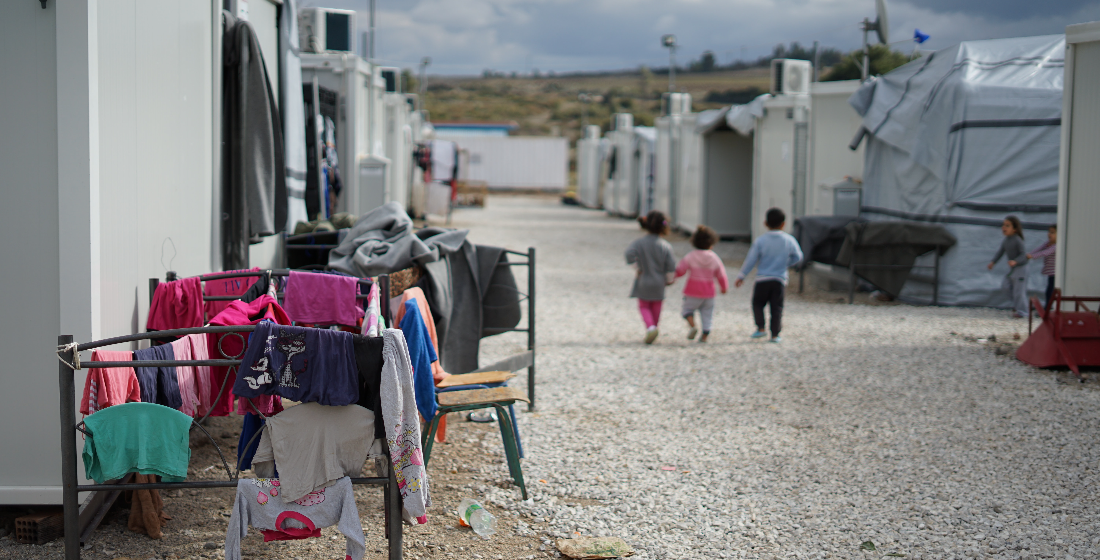Thinking outside the box: How DFIs can support refugees
The IFC and the DFC last month launched innovative financing facilities aimed at unlocking new sources of funding to address the world’s growing refugee crisis.

UNHCR, the UN Refugee Agency, estimates that there were nearly 80 million forcibly displaced people worldwide by the end of 2019—85% of whom were hosted in developing countries with limited resources. The number of forced displacements is growing every year and the development community is desperately seeking ways to mobilise more funding for the issue.
But, in what were novel approaches to bolstering the economic support for refugees, the International Finance Corporation (IFC) and the US’ Development Finance Corporation (DFC) last month launched financing facilities worth a combined $27.5 million for FDPs across a variety of Middle Eastern and African nations.
“Refugees, especially women and youth, face extraordinary challenges accessing economic opportunity, but investments in displaced populations and their host communities can yield transformative results in those societies,” says Algene Sajery, DFC’s vice president of External Affairs and head of Global Gender Equity Initiatives.
A blended approach
The IFC, in partnership with the government of the Netherlands, announced it was launching a new $17.5 million blended finance investment facility to help de-risk and improve the financial viability of high-impact projects benefiting FDPs and their host communities.
The facility will work on a co-financing model. The IFC, on its own account, will invest on commercial terms, while its blended finance department, using funds from the government of the Netherlands, will co-invest via a variety of de-risking mechanisms such as longer tenors, interest rate reductions, guarantees and flexible repayment terms. “The whole idea is to de-risk the DFI, in this case the IFC, so they can enter this space, and to provide the financing at the right level of concessionality for either our client directly or through our client’s bank, if we use a financial structure through a financial institution,” says Kruskaia Sierra-Escalante, manager of the IFC’s Blended Finance Unit.
The financing is part of the Prospects Partnership Initiative (Prospects), which aims to transform the way governments and other stakeholders, including the private sector, respond to these growing and protracted forced displacement crises. Prospects supports refugees and host communities in Egypt, Ethiopia, Iraq, Jordan, Kenya, Lebanon, Sudan and Uganda. It brings together the IFC, the government of the Netherlands, the ILO, UNHCR, UNICEF, and the World Bank to provide a combination of humanitarian assistance, longer-term development support, and private sector solutions to help refugees rebuild their lives and support themselves and their families.
This latest transaction complements the IFC's existing agreement with the government of the Netherlands under Prospects to provide advisory services, bringing the total amount of funding provided by the IFC to $47 million. The development financier will use the new funds to de-risk investments, alleviate first-mover costs, and develop a pipeline of concrete investment opportunities to create new markets where there is little involvement from the private sector.
“The facility provides us a lot of flexibility when it comes to instruments: we can work with loans, we can work with equity, we can work with guarantees so that we can complement the IFC’s own account investment in tackling specific market barriers and perceived risks—this is an area where there hasn’t been a lot of demonstration investments,” explains Sierra-Escalante. “Guarantees, for example, can be used to lock in financing where there has been a perception that FDP businesses are too risky or won’t pay.”
According to Sierra-Escalante, the first year or two of the facility will be dedicated to building a pipeline, before funds will subsequently start to be distributed. And if the pipeline is strong enough, the IFC will look to raise new donor funds. The funding ratio will differ according to the financing mechanism but, as a benchmark for all of the IFC’s blended finance activities, the funding on average is made up of three parts IFC funding to two parts third-party funding.
“Early indications in the investment pipeline we’re seeing is that there are potential opportunities with our client banks and also non-bank financial institutions, because there are already some investments happening in refugee and host communities space—a DFI itself can’t go to that small a scale efficiently,” says Sierra-Escalante. “We may also invest in some funds, providing risk capital. So one element is providing financing, that’s a way to start, but small refugee or host community businesses may start requiring some equity.”
The facility will be launched just ahead of World Refugee Day, specifically aimed at unlocking and catalysing private sector financing for innovative and scalable investments that will create solutions to address the FDPs’ economic and social challenges.
“With blended finance, we’re trying to use some public funds and grant money but with the vision of getting to commercial sustainability,” says Sierra-Escalante. “This facility is really a way to start that process, because until now the refugee space has been focused on charitable contributions, grants, humanitarian interventions—so this is a pretty novel approach. As much as this deal itself, we want the sector to move toward more and more commercial sustainability and less reliance on grant funding.”
Refugee Impact Bond
DFC, the US’ development finance goliath, also announced a $10 million financing for the Near East Foundation (NEF) to help support refugees and host populations in Jordan and Lebanon. NEF will use the proceeds to provide a comprehensive micro-enterprise training programme for refugees and host populations, primarily women and youth. The facility—deriving from the DFC’s Portfolio for Impact and Innovation (PI2) Initiative—will be funded through a development impact bond (DIB), the first to specifically target refugees.
“Through DFC’s support for the Refugee Impact Bond, NEF will mobilise private sector investment to help support economic inclusion and resilience for vulnerable refugee populations,” explains Sajery.
The DIB will work with local partners to build the economic resilience of the refugees, reducing reliance on humanitarian aid and supporting social cohesion. Through the Refugee Impact Bond, NEF aims to help refugees and those with limited resources acquire skills, sustainably improve the ability of households to meet basic needs, safely rebuild assets, and protect against shocks. NEF president and CEO, Charlie Benjamin, speaks to the need for funding structures like this DIB, saying: “Through its outcome-driven approach, multi-year funding, and independently evaluated outcomes, the DIB fills a critical gap in livelihoods programming—especially in crisis contexts.”
The DFC’s investment also advances its 2X Women’s Initiative, which is dedicated to supporting the economic empowerment of women across the developing world. At least 65% of the beneficiaries under this refugee project will be women, who are often the most vulnerable among refugee populations.
Jordan and Lebanon host many of the Middle East’s refugees, placing further pressure on their job markets, infrastructure, and educational systems. Although traditional humanitarian response mechanisms are critically important, the perennial challenge has been shifting from providing emergency relief to establishing long-term, large-scale resilience programmes. By focusing on measurable outcomes and empowering delivery partners with the flexibility to focus solely on sustainable impact, financing through a DIB—a loan where the principal and interest is repaid by donors seeking specific measurable social impacts—can contribute to that paradigm shift.
In recent years, a surge in violence and conflict has driven a rapid increase in state and community-based fragility in the world’s poorest regions. As a result, the number of FDPs is growing every year and displacements are also lasting longer; today, 42% of refugees have been displaced for five or more years. And looking forward, the effects of the Covid-19 pandemic and climate change will only exacerbate the problem.
Increasingly, forcibly displaced populations tend to be geographically stable, urban, connected and economically active. However, they remain excluded from financial services that could be vital to their survival or livelihood. FDPs often bring with them a specific set of skills: for example, a refugee with a tailoring business in their community of origin could easily set up another tailoring business in their new community. But many FDPs simply don’t have access to the finance needed to set up such businesses. However, if more lenders and governments were to treat these communities as potential businesses rather than simply as charity cases, both the recipients and their host countries would stand to benefit.
“From our perspective, we already see many people from refugee and host communities with lots of entrepreneurial and business skills,” says Sierra-Escalante. “That’s why we should be working with diagnostic capacity building on one side, and then financing and investing on the other, so we can realise that untapped business potential.”





